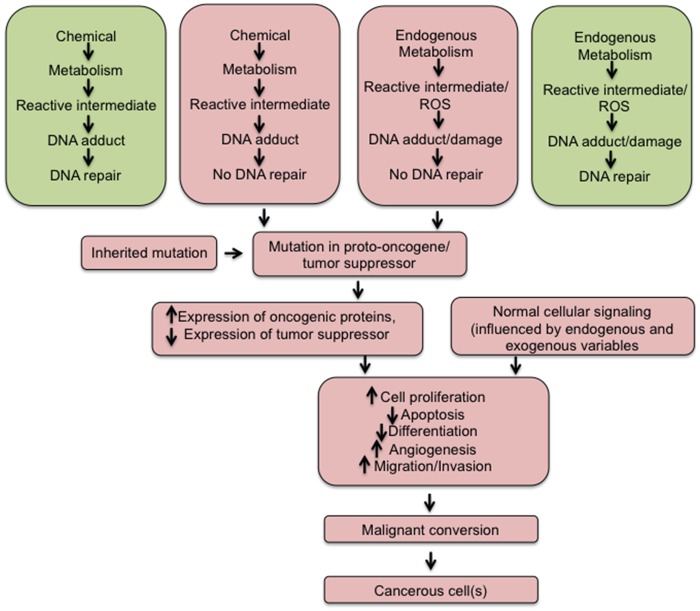Figure 1.
Ontogeny of events leading to cancer. Chemicals can be metabolized to reactive intermediates that may form an adduct with DNA. In some cases, this adduct can be repaired and no DNA damage results (Upper box on left). In contrast, sometimes the adduct is not repaired causing a mutation in a gene (Upper box, second from left) that may be critical for cancer (proto-oncogene, tumor suppressor). Endogenous metabolism can also cause the generation of reactive intermediates or reactive oxygen species that can bind to DNA and form an adduct or DNA damage, respectively. In some cases, this adduct/damage can be repaired and no alterations in DNA results (Upper box, first from right). In contrast, sometimes the adduct/damage is not repaired causing a mutation in a gene (Upper box, second from right), which may be critical for cancer (proto-oncogene, tumor suppressor). In some case, genes can contain mutations due to inheritance, and this may be in a critical gene that will lead to cancer. Combined, these 2 mechanisms can lead to increased expression of an oncogene and/or decreased expression of a tumor suppressor. Further, there is normal cellular signaling that can be influenced by endogenous or exogenous variables that collectively alter major pathways that regulate proliferation, apoptosis, differentiation, angiogenesis, migration and invasion. With time, these cells can convert to a malignant neoplasm and ultimately cancer.

